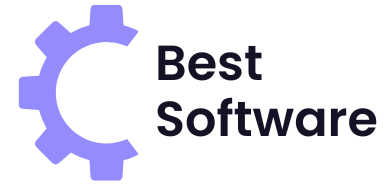Email marketing continues to be a powerful tool for marketers, and autoresponders play a crucial role in this strategy. With the right autoresponder, marketers can automate their communications, engage their audience effectively, and boost their sales. Choosing the best autoresponder can significantly enhance their email marketing campaigns and streamline their workflows.
There are many options available, each offering unique features and benefits. From user-friendly interfaces to advanced automation capabilities, the best autoresponders help marketers tailor their messages and track performance. Understanding these tools can lead to better customer relationships and improved results.
This article explores the seven best autoresponders for marketers in 2025. Readers will find insights into how these tools can make email marketing more efficient and impactful.
Understanding Autoresponders

Autoresponders are tools that send automated email messages based on specific triggers. These triggers can include actions like signing up for a newsletter, making a purchase, or important dates such as birthdays.
They help marketers stay connected with their audience consistently. Using autoresponders allows businesses to save time while providing timely information to customers.
Key Benefits of Autoresponders:
- Efficiency: Automates email tasks to ensure messages are sent without manual effort.
- Engagement: Keeps subscribers engaged with regular updates and content.
- Personalization: Sends tailored messages based on user behavior and preferences.
Popular autoresponders come equipped with features that enhance marketing efforts. For example:
- Mailchimp: Known for its user-friendly design and all-in-one tools.
- ActiveCampaign: Offers advanced automation features for detailed campaigns.
- Brevo: Provides a strong free plan suitable for startups.
Autoresponders can play a crucial role in a marketer’s strategy. They help nurture leads and maintain customer relationships, leading to increased sales and loyalty over time.
Choosing the right autoresponder depends on the specific needs of the business. Factors like budget, required features, and ease of use are important considerations in this decision.
Choosing the Right Autoresponder

Selecting the right autoresponder is crucial for effective email marketing. It requires careful consideration of various factors that can impact communication with customers and the overall success of marketing campaigns.
Features to Consider
When choosing an autoresponder, features play a significant role. It’s vital to look for tools that offer email automation, list segmentation, and A/B testing. These features allow marketers to send targeted messages, improving engagement rates.
Advanced marketing automation capabilities can help automate tasks based on user behavior. This includes behaviors like clicking on links or making purchases. Tools that provide customizable email templates can enhance branding and make campaigns visually appealing.
Additional features to check include analytics and reporting. Understanding email performance through metrics like open rates and click-through rates is essential for refining strategies.
Ease of Use
Ease of use is another important factor. An autoresponder should have a straightforward interface that marketers can navigate without extensive training. Drag-and-drop editors can simplify email design, making it accessible for anyone, regardless of technical skill.
Training resources, such as tutorials and webinars, can help users understand the system quickly. Choosing a platform with a user-friendly dashboard will facilitate the overall experience. If a tool feels complicated or cluttered, it might hinder a marketer’s ability to focus on creating effective campaigns.
Integration Capabilities
Integration with other tools can significantly enhance the effectiveness of an autoresponder. It is crucial to choose software that connects easily with Customer Relationship Management (CRM) systems, e-commerce platforms, and analytics tools.
Popular integrations include social media platforms and lead generation tools, such as landing page creators. This ability allows marketers to streamline workflows and gather data from multiple sources.
A robust API can also facilitate custom integrations, which may be necessary for unique business needs. Checking compatibility with existing systems can save time and effort in the long run.
Customer Support
Strong customer support is essential when choosing an autoresponder. A responsive support team can help resolve issues quickly, minimizing disruptions in marketing efforts.
Look for autoresponders that offer multiple support channels, including live chat, email, and phone support. Knowledge bases and community forums can also provide valuable assistance and resources.
It’s helpful to read reviews about a provider’s support services. Positive feedback regarding quick response times and helpful representatives indicates a reliable support structure to depend on when challenges arise.
Pricing and Plans
Pricing is a key aspect to consider when selecting an autoresponder. Many services offer tiered pricing plans based on specific features and the number of contacts. For instance, GetResponse starts at $19/month for basic features.
Marketers should evaluate what each plan includes, such as automation features or subscriber limits.
Free trials or plans allow users to explore the software before committing long-term. Understanding the costs associated with upgrades is crucial for managing budgets effectively. Comparing services can help identify the best value for the necessary features.
Top Autoresponders for Marketers

Choosing the right autoresponder is crucial for effective email marketing. The following options are well-regarded for their features and usability. Each offers unique benefits to cater to different marketing needs.
Mailchimp
Mailchimp is one of the most popular autoresponders for marketers. It offers a free plan that is ideal for beginners, allowing up to 500 contacts and 1,000 monthly emails. Users appreciate its user-friendly interface and customizable templates.
Mailchimp provides advanced analytics to track campaign performance. Its automation features allow marketers to set up triggers based on user behavior. Additional integrations with e-commerce platforms enhance its functionality, making it suitable for various marketing strategies.
ConvertKit
ConvertKit is known for its focus on content creators, such as bloggers and online course developers. It provides a simple and clean interface, which makes it easy to navigate. The tool emphasizes audience segmentation and tagging, helping marketers target their messages effectively.
ConvertKit allows users to create landing pages and opt-in forms without coding experience. Its automation features are robust and help users send personalized emails based on specific actions. Even though it has a paid-only model, many find it worthwhile for the tools it offers.
AWeber
AWeber has a long-standing reputation in the email marketing space. It provides a variety of templates and ready-to-use automation sequences. Users can benefit from its customer service, available via live chat and phone.
AWeber also features powerful list management and segmentation tools. This makes it easier for subscribers to receive relevant content. Additionally, it has good integration options with various platforms, making it versatile for marketers of all kinds.
GetResponse
GetResponse stands out with its comprehensive features that include email marketing, landing pages, and automation. It offers a free trial, which helps users explore its capabilities. Known for its advanced automation workflows, GetResponse allows marketers to design complex email campaigns easily.
The platform also includes webinar hosting capabilities, making it unique among autoresponders. Marketers find it beneficial for lead generation and nurturing applications. The analytics tools provide insights to improve email performance and ROI.
ActiveCampaign
ActiveCampaign is recognized for its powerful automation and CRM integrations. It is suitable for businesses that need advanced functionality, such as lead scoring and sales tracking. Users can create highly personalized email campaigns based on subscriber behavior.
ActiveCampaign provides detailed analytics and reporting to help marketers track their success. The platform also emphasizes customer experience, allowing for tailored communication strategies. Although it might be a bit overwhelming for beginners, experienced users often appreciate its depth.
Drip
Drip is designed specifically for e-commerce businesses. It offers a range of automation features tailored to online retail. Drip enables users to create personalized experiences based on purchase behavior and customer interactions.
The platform provides detailed tracking for user actions, allowing for targeted messaging. Its integration with major e-commerce platforms enhances its usability for marketers. This focus on data-driven decision-making makes Drip a strong choice for marketers in the e-commerce field.
Sendinblue
Sendinblue combines email marketing with SMS and chat functionality. It offers a free plan that supports up to 300 emails per day. This makes it a cost-effective option for small businesses.
Users find its automation tools intuitive and effective for managing campaigns. Sendinblue also includes features like landing pages and sign-up forms. Its reporting tools give valuable insights into campaign effectiveness, helping marketers refine their strategies.
Maximizing ROI with Autoresponders

Autoresponders can significantly boost return on investment (ROI) for marketers. They help streamline communication, improve engagement, and enable data-driven decisions. Key strategies include A/B testing, utilizing analytics, and effective list management.
A/B Testing
A/B testing is a vital tactic for maximizing ROI. It involves comparing two versions of an email to determine which performs better. Marketers can test elements like subject lines, sending times, and call-to-action buttons.
- Example Test Ideas:
- Subject Line: “Unlock Your Savings!” vs. “Exclusive Offer Just for You!”
- Call to Action: “Shop Now” vs. “Get Yours Today”
By analyzing open rates and click-through rates, marketers can make informed choices that lead to higher engagement and conversions. Regular A/B testing helps refine strategies and improves long-term results.
Analytics and Reporting
Using analytics and reporting tools provides insights into how well emails perform. Metrics such as open rates, click-through rates, and bounce rates reveal valuable information.
- Key Metrics to Track:
- Open Rate: Percentage of recipients who open the email.
- Click-Through Rate: Ratio of users who click on a specific link to total users who view the email.
- Bounce Rate: Percentage of emails that could not be delivered.
These metrics help marketers understand audience behavior and preferences. Fine-tuning emails based on this data can lead to more effective future campaigns and increased ROI.
List Management
Effective list management is crucial for driving engagement and ensuring high ROI. A well-organized email list helps target specific groups, leading to more tailored and relevant communication.
- Best Practices:
- Segment Lists: Divide subscribers into groups based on interests, behavior, or demographics.
- Clean Lists Regularly: Remove inactive users to maintain deliverability rates.
- Use Opt-in Forms: Make it easy for potential customers to subscribe.
By applying these practices, marketers can enhance communication relevancy and boost engagement metrics, ultimately improving ROI.
Frequently Asked Questions
Autoresponders play a significant role in digital marketing strategies. Understanding their key features, integrations, and specific uses can help marketers enhance their campaigns effectively.
What are the top features to look for in an email autoresponder for marketers?
Marketers should consider several essential features in an email autoresponder. Key features include automation capabilities, customizable templates, list segmentation, and analytics. These help in crafting targeted messages and tracking campaign performance.
How does autoresponder integration improve marketing automation?
Integration of autoresponders with other marketing tools is vital. It allows seamless data sharing and workflow automation. This leads to increased efficiency and better coordination between various marketing elements.
How can AI-enhanced autoresponders benefit digital marketing campaigns?
AI-enhanced autoresponders provide personalization based on user behavior. They can analyze data to predict customer needs and preferences. This results in more relevant communications and improved engagement rates.
What are the advantages of using an autoresponder for affiliate marketing?
Using an autoresponder for affiliate marketing offers many advantages. It can automate email sequences that promote affiliate products. This saves time while maximizing reach and potential sales through consistent engagement.
In what ways can autoresponders be utilized for Instagram marketing?
Autoresponders can support Instagram marketing by sending automated responses to inquiries. They can nurture leads captured from Instagram ads, providing timely information. This enables brands to maintain engagement with potential customers effectively.


